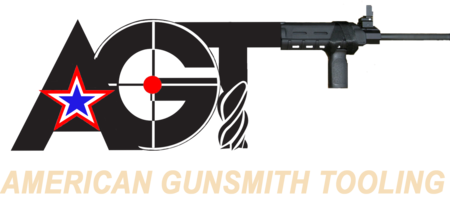5 Ways of Completing an 80% Lower Receiver
5 Ways of Completing an 80% Lower Receiver
While the average AR-15 builder may not have access to all the tools mentioned here, he or she should have access to at least one or more. These various ways of completing an 80% lower receiver will help you understand what you need or can use to complete your 80% lower.
1. CNC Machine
– An automated machine tool operated by computer numerical control (CNC) is often referred to as a CNC machine. These computer-aided tools are controlled by computer-aided design (CAD) and computer-aided manufacturing (CAM) programs. By using a CNC machine, the process of completing an 80% lower will be automated and offer precision machining.
For those who have access to a CNC machine, there are various CAD programs available online to complete your 80% lower receiver. These CAD programs will allow you to program the CNC machine in order to complete your 80% lower to MilSpec standards.
Pros: The pros of using a CNC machine are the elimination of human error and precision manufacturing. Once the CAD program is installed and X, Y and Z-axis are established, the CNC machine has the ability to complete the 80% lower with precision.
Cons: The CNC machine will require adequate knowledge of CAD programming and CNC machine operation. Unfortunately, most individuals do not have access to a CNC machine.
2. Milling Machine
– A milling machine is designed to machine solid materials such as metal and wood. Depending on make and model, milling machines can either be automated, CAD directed or manually operated. Milling machines are capable of multi-axis machining and offer precision capability even if operated manually.
Pros: A milling machine will offer precision milling of your AR-15. Even with limited knowledge in machining, milling machine basics can be learned very quickly. If you have access to a milling machine, ask the owner to teach you some basics. With just a few basic skills you can complete your 80% lower using the precision milling capabilities of the milling machine.
Cons: Milling machines do require a learning curve. Not everyone will be comfortable learning how to operate a milling machine and its dynamic capabilities may be somewhat intimidating. Depending on your skill level, a milling machine will offer superior capabilities.
3. Drill Press
– A drill press is a pedestal style drill that is mounted to a stand. Most portable style drill presses have a spindle and chuck that moves parallel to the axis of the pedestal. Most drill presses will be operated manually, although they will allow for setting of various depths when drilling or milling. The drill press can also provide for the mounting of a vise or clamp in order to securely hold your 80% lower receiver while drilling and milling.
Pros: A drill press is the simplest way to complete your AR lower. With limited knowledge and skills most anyone can complete an 80% lower with drill bits and end mills. The drill press is also economical and most individuals will have access to a drill press.
Cons: A drill press will not provide the precision machining of a CNC machine or milling machine.Although, if done correctly and by following detailed instructions, most people will not be able to tell your lower receiver was completed on a drill press.
4. Router
– A router is designed to rout or hollow edges and faces of solid surfaces such as wood. Operating on a single spindle, the router allows various rotary tools or bits to be attached for routing.Most routers are also designed to be operated manually.
Pros: A router can provide an alternative means to completing your AR-15 lower receiver. Although, routers must be used with caution and with the proper cutting tools.
Cons: A router turns at a very significant rate of speed and if considering using a router for aluminum, please use extraordinary precaution. Eyewear is especially necessary do to excessive shavings, and the margin of error is less considering how fast a router will remove the material of your 80% lower. You will also want to use carbide bits designed for aluminum since the router will have a tendency to ‘stick’ or ‘melt’ the aluminum to the bit.
5. Electric Hand Drill
– An electric hand drill is a tool that can be fitted with a driving or drilling attachment and is predominately used for drilling holes invarious materials. Hand drills can be used for wood, steel and other solid materials.
Pros: Most every DIY’r owns a hand drill. Hand drills are economical and do not require much skill to operate.
Cons: Hand drills do not provide a steady axis when drilling and the operator must be careful if striving for precision. Unlike a drill press, which provides depth settings, a hand drill requires the user to follow the necessary depth by ulterior methods.

